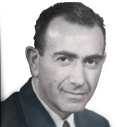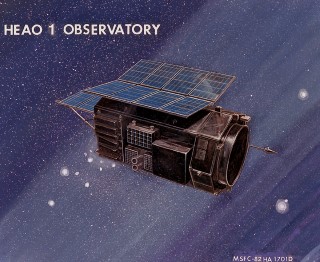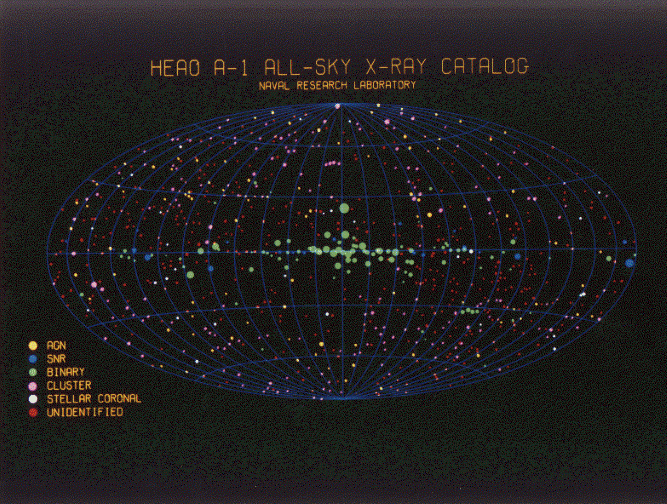HEAO-1: The HEAO project involved the launching of three unmanned scientific observatories into low Earth orbit between 1977 and 1979 to study some of the most intriguing mysteries of the Universe: pulsars, black holes, neutron stars, and supernovae. This artist's conception depicts the High Energy Astronomy Observatory (HEAO)-1 in orbit. HEAO-1 was launched on August 12, 1977, to survey the sky for X-ray and gamma-ray sources, as well as to pinpoint their positions.
Credit: NASA
The first mission of the HEAO program would have a very large array of X-ray detectors, and the second one was the imaging Einstein Observatory. The Naval Research Laboratory was selected to develop one of the four instrument packages to be flown on the HEAO-I satellite, which was launched in August 1977. Our package, the Large Area X-Ray Survey Array, consisting of seven modules of large-area proportional counters, was the largest space instrument ever to be flown on any satellite at the time. An improvement over the Geiger counter, proportional counters could detect the presence of an X-ray and measure its wavelength. HEAO-1 scanned the entire sky for high-energy sources, which included radio pulsars, binary pulsars, black holes, quasars, and extragalactic X-ray sources, resulting in a new map of nearly 1,000 discrete X-ray sources. Given this, you would never know that we had problems with the HEAO payload! After launch we lost the detectors, one by one. We ended up with two that were working well, two that were working partially well, and three that were totally defunct. We wished we had had more time prior to launch so that we could have done better testing and come out with better performance. On the other hand, what worked produced very beautiful results.
A year later, HEAO-2, renamed Einstein after launch, carried the first fully imaging X-ray telescope into space, built by Riccardo Giacconi and his team. It returned detailed quasar images and discovered that Jupiter and Earth emit X-rays. Einstein made over 5,000 pointed observations and discovered several thousand serendipitous sources that fell within the field of view of its imaging instruments. It opened up X-ray observation to all classes of celestial objects, including auroras on planets, supernovas, galaxies, quasars, and sources of X-ray background radiation.
HEAO-1 All-Sky X-ray Catalog: Beginning in 1977, NASA launched a series of very large scientific payloads called High Energy Astronomy Observatories (HEAO). The first of these missions, HEAO-1, carried NRL’s Large Area Sky Survey Experiment (LASS), consisting of 7 detectors. It surveyed the X-ray sky almost three times over the 0.2 keV - 10 MeV energy band and provided nearly constant monitoring of X-ray sources near the ecliptic poles.
Credit: NASA



